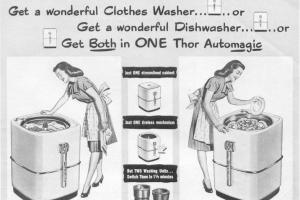The Electric Review reported in 1887 that members of the U.S. Congress "who found themselves lethargic after 'receptions and suppers all night' or who had 'exhausted their brain power by speechmaking' were retiring to the basement to be 'filled quietly with electricity.'"

Congressmen could get a jolt in the Capitol's engine room from a live wire. It "felt like a rapid succession of tiny pinpricks through the hand and up the arm."
The shocking device is no longer in the Capitol. Perhaps it's the missing ingredient needed to overcome legislative gridlock.
Quoting Carolyn Thomas De La Pena. From her hilarious book, The Body Electric: How Strange Machines Built the Modern American.
* * *
In Japan, the simple toilet is anything but. It's an electric experience.
Shocking to first-time travelers from America, a Japanese toilet sprays warm water at your... It also has a dryer. Toilet paper is unnecessary, except during power outages. Brings a whole new meaning to the reliability goal of utilities.
Seventy percent or so of Japanese households have electric toilets, which typically have heated seats as well. As much as four percent of all household electricity consumption is attributable to these toilets.
* * *
Before streaming music, before MTV, before even radio, there was the telharmonium. In 1902, the inventor of the telharmonium, Dr. Thaddeus Cahill demonstrated it for the world-famous scientist Lord Kelvin. Yes, a temperature scale was named in Lord Kelvin's honor.
The two-hundred pound telharmonium was a rudimentary synthesizer. Pressing a key sent a signal of a certain frequency via telephone lines. Cahill envisioned that four groups of top musicians would perform throughout the day and evening at central stations. The performances would be listened to for miles around in concert halls, restaurants, hotels, department stores, etc.
Alas, the concept never really took off. The telephone companies were none too pleased, as telharmonium signals were so strong that they interfered with adjoining telephone lines carrying caller conversations.
* * *
In the fifties, electronic music pioneer Raymond Scott patented the Clavivox, with his soon-to-be famous assistant Robert Moog. By the late sixties, Scott built the Electronium which the musician would program to compose and play simultaneously. The legendary Berry Gordy bought one for Motown but also hired Scott to run Motown's electronic music division.
* * *
I need one! What about a vision toaster so you can see how browned your bread is? And how about a stencil toaster so you can decorate your toast or even write a message on it?
Getting ready for the big game? You need a keg fridge, that actually keeps a keg cold for when the party arrives.
For the party that your friends will really remember, go buy a soft pretzel machine (with cheese dip warmer), a chocolate fondue fountain, a soft serve or slushy or waffle bowl maker, or all three. Electricity can be fun.
Then there's the mini donut factory. The milk frother to make a latte or cappuchino. Drowsy in the morning? You must have a three in one breakfast station combining a grill, toaster oven and coffee maker.
Things got messy. It happens. Time to break out the robotic vacuum to clean up, as the Jetsons would have done.
* * *
Reasoning that a housewife during the great depression spent sixty percent of her time in the kitchen, one manufacturer sold a refrigerator with a built-in radio. In the 1940's, the Thor combination washer cleaned both your clothes and your dishes. In separate loads one would think. Despite compelling advertising campaigns, neither the radio refrigerator or combination washer succeeded in the marketplace.



